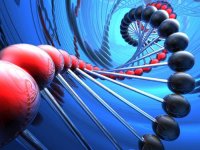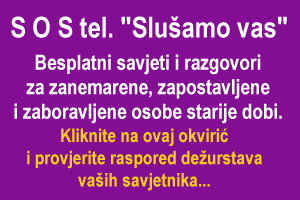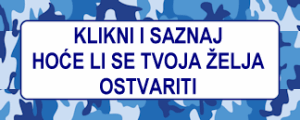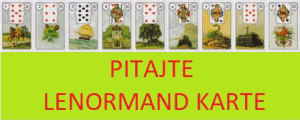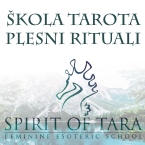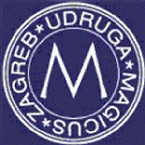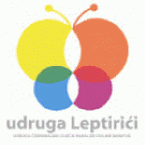120. Wiebers DO, Adams HP, Whisnant JP. Relevance of animal models to stroke [letter]. Stroke 1990; 21: 1091-1092.
121. Macleod MR, O’Collins T, Howells DW, Donnan GA. Pooling of animal experimental data reveals influence of study design and publication bias. Stroke 2004; 35: 1203-8.
122. Macleod M. What can systematic review and meta-analysis tell us about the experimental data supporting stroke drug development? International Journal of Neuroprotection and Neuroregeneration 2005; 1: 201.
123. The National Institute of Neurological Disorders and Stroke rt-PA Stroke Study Group. Tissue plasminogen activator for acute ischemic stroke. New England Journal of Medicine 1995; 333: 1581-7.
124. Weiss R. Boy’s cancer prompts FDA to halt gene therapy. Washington Post, 4. ožujka 2005., str. A02.
125. Harris G. Gene therapy is facing a crucial hearing. New York Times, 3. ožujka 2005., str. A16.
126. Pollack A. Gene therapy for hemophilia shows some promise. New York Times, 10. prosinca 2002., str. F2.
127. Pollack A. Company discontinues trial of hemophilia gene therapy. New York Times, 28. svibnja 2004., str. C2.
128. Sharpe R. Science on Trial. Sheffield, England, Awareness Pub, 1994.
129. Packer M, Carver JR, Rodeheffer RJ, et al. Effect of Oral Milrinone on Mortality in Severe Chronic Heart Failure. New England Journal of Medicine 1991; 325: 1468-1475.
130. McKenzie R, Fried MW, Sallie R, et al. Hepatic failure and lactic acidosis due to fialuridine (FIAU),
an investigational nucleoside analogue for chronic hepatitis B. New England Journal of Medicine 1995; 333:
1099-1105.
131. Kolata G. 2 top diet drugs are recalled amid reports of heart defects.
New York Times 16. rujna 1997., str. A1.
132. Couzin J. Estrogen Research: The great estrogen conundrum. Science, 2003; 302: 1136-1138.
133. Topol EJ. Failing the public health — Rofecoxib, Merck, and the FDA. New England Journal of Medicine 2004; 351: 1707-1709.
134. Graham DJ. Testimony before the U.S. Senate Finance Committee, 18. studenog 2004.
135. McCollough AR. Four-year review of sildenafil citrate, Reviews in Urology, 2002; 4 (Dodatak 3): S26-S38.
136. More Viagra, blindness questions. CBS News, 27. lipnja 2005.
www.cbsnews.com/stories/2005/06/27/
eveningnews/main704562.shtmlCMP=IL-SearchStories
137. Lazarou J, Pomeranz BH, Corey PN. Incidence of adverse drug reactions in hospitalized patients. Journal of the American Medical Association 1998; 279: 1200-1205.
138. Editorial. Drugs tests on trial. Nature 2006; 440: 970.
139. Cohen SM, Ellwein LB. Cell proliferation in carcinogenesis. Science 1990; 249: 1007-1011.
140. Soffritti M, Belpoggi F, Esposti DD, Lambertini L. Aspartame induces lymphomas and leukaemias in rats. European Journal of Oncology 2005; 10: 107-16.
141. Lim U et al. Prospective study of aspartame-containing beverages and risk of hematopoietic and brain cancers. 97th AACR Annual Meeting, abstract #4010, 4. travnja 2006.
142. Gear RW, Miaskowski C, Gordon NC, Paul SM, Heller PH, Levine JD. Kappa-opioids produce significantly greater analgesia in women than in men. Nature Medicine 1996; 2: 1184-1185.
143. Berardesca E, Maibach IH. Racial differences in sodium lauryl sulphate induced cutaneous irritation: Black and White. Contact Dermatitis 1988; 18: 65-70.
144. Fraga MF, Ballestar E, Paz MF, et al. Epigenetic differences arise during the lifetime of monozygotic twins. Proceedings of the National Academy of Sciences 2005; 102: 10604-9.
145. www.fda.gov/oc/speeches/2004/
phrma0403.html.
146. Innovation or stagnation: Challenge and opportunity on the critical path to new medical products. U.S. Food and Drug Administration Report, Ožujak 2004., str. 8. www.fda.gov/oc/initiatives/criticalpath/
whitepaper.pdf.
147. Harding A. More compounds failing Phase I. FDA chief warns that high drug attrition rate is pushing up the cost of drug development. The Scientist 6. kolovoza 2004.
148. U.S. General Accounting Office. FDA Drug Review: Postapproval Risks 1976-1985. Publication GAO/PEMD-90-15, Washington, D.C., 1990.
149. Barber B. The ethics of experimentation with human subjects. Scientific American 1976; 234(2): 25-31.
150. Eilperin J. EPA using data from chemical tests on humans. Washington Post, 17. lipnja 2005., str. A03.
151. Cole LA. The Eleventh Plague: The Politics of Biological and Chemical Warfare. New York, W.H. Freeman & Company, 1996.
152. Kiernan V. Radiation doctors abused trust in the name of science. New Scientist 14. listopada 1995., str. 8.
153. Annas GJ. Baby Fae: The ‘anything goes’ school of human experimentation. Hastings Center Report 1985; 15(1): 15-17.
154. Lifton RJ. The Nazi Doctors. New York, Basic Books, 1986.
155. Preston R. The Hot Zone. New York, Random House, 1994.
156. Cohen MJ. Ebola Alice? Texas Republic 1996; 3(2): 27-30.
157. McKenna MAJ. Monkey virus kills Yerkes researcher. Atlanta Journal-Constitution 12. prosinca 1997.
158. Pennisi E. Monkey virus DNA found in rare human cancers. Science 1997; 275: 748-749.
159. Baboon cells fail to combat AIDS. Nature 1996; 379: 577.
160. Hooper E. The River: A Journey to the Source of HIV and AIDS. Boston, Little, Brown & Co, 1999.
161. Reinhardt V, Roberts A. The African polio vaccine-acquired immune deficiency syndrome connection. Medical Hypotheses 1997; 48: 367-374.
162. Horowitz LG. Emerging Viruses: AIDS and Ebola. Rockport, Mass, Tetrahedron, 1996.
163. Allan JS. Xenotransplantation at a crossroads: Prevention versus progress. Nature Medicine 1996; 2: 18-21.
164. Fano A, Cohen MJ, Cramer M, Greek R, Kaufman SR. Of Pigs, Primates and Plagues: A Layperson‘s Guide to the Problems with Animal-to-Human Organ Transplants. New York, Medical Research Modernization Committee, 1997.
165. LeTissier P, Stoye JP, Takeuchi Y, Patience C, Weiss RA. Two sets of human-tropic pig retrovirus. Nature 1987; 389: 681-682.
166. Kimbrell A. The Human Body Shop. San Francisco, HarperCollins, 1994, str. 183-187.
167. Rhodes R. Deadly Feasts. New York, Simon & Schuster, 1997.
168. Epstein SS. Unlabeled milk from cows treated with biosynthetic growth hormones: A case of regulatory abdication. International Journal of Health Services 1996; 26: 173-185.
169. Epstein SS. A needless new risk of breast cancer. Los Angeles Times, 20. ožujka 1994.
170. Challcombe DN, Wheeler EE. Safety of milk from cows treated with bovine somatotropin. The Lancet 1994; 344: 815-816.
171. Cummins R. An international boycott of genetically engineered foods. Pure Food Campaign, Washington, DC, 4. ožujka 1997.
172. Leonard RE. Codex at the crossroads: Conflict on trade health. Nutrition Week 1995; 25: 4-5.
173. Heimlich HJ, Patrick EA. The Heimlich maneuver: Best technique for saving any choking victim’s life. Postgraduate Medicine 1990; 87: 68-79.
174. Cohen MJ, Young C. ‘Alcoholic’ Rats and Other Alcohol Research Using Animals. New York, National Research Information Center, 1989.
175. Sitaram N, Gershon S. Animal models to clinical testing - promises and pitfalls. Progress in Neuropsychopharmacology, Biology and Psychiatry 1983; 7: 227-228.
176. Davis JM. Antipsychotic drugs, in Kaplan HI, Sadock BJ (eds). Comprehensive Textbook of Psychiatry, Fourth Ed. Baltimore, William and Wilkins, 1985.
177. Unal B et al. Modelling the decline in coronary heart disease deaths in England and Wales, 1981-2000: comparing contributions from primary prevention and secondary prevention. British Medical Journal 2005; 331: 614.
178. Doll R et al. Mortality in relation to smoking: 50 years’ observations on male British doctors. British Medical Journal 2004; 328: 1519.
179. Lower GM. Human carcinogenesis: A disciplinary perspective. Medical Hypotheses 1990; 33: 1-6.
180. Ornish D, for the Multicenter Lifestyle Demonstration Project Research Group. Avoiding revascularization with lifestyle changes: The multicenter lifestyle demonstration project. American Journal of Cardiology 1998; 82: 72T-76T.
181. Esselstyn Jr. CB. Updating a 12-year experience with arrest and reversal therapy for coronary heart disease. American Journal of Cardiology 1999; 84: 339-341.
182. Heimlich HJ. Advantages and safety of clinical research, in Cohen M, Natelson N (eds).
Facing the Challenge. Alexandria VA, Concern for Helping Animals in Israel, 1990, str. 123-135.
183. Pechura CM, Martin JB (eds). Mapping the Brain and Its Functions. Washington DC, National Academy Press, 1991.
184. Savoy RL. History and future directions of human brain mapping and functional neuroimaging. Acta Psychologica 2001; 107: 9-42.
185. Taylor-Robinson SD. Applications of magnetic resonance spectroscopy to chronic liver disease. Clinical
Medicine 2001; 1: 54-60.
186. Schmermund A, Baumgart D, Erbel R. Coronary calcification by electron beam tomography: comparison with coronary risk factors and angiography. Journal of Cardiovascular Risk 2000; 7: 99-106.
187. Hill RB, Anderson RE. The Autopsy: Medical Practice and Public Policy. Boston, Butterworth, 1988.
188. Kaufman SR. Autopsy: A crucial component of human clinical investigation. Archives of Pathology and Laboratory Medicine 1996; 120: 767-770.
189. Opie EL. Disease of the Pancreas. Philadelphia, JB Lippincott, 1910.
190. Barron M. The relation of the islets of Langerhans to diabetes with special reference to cases of pancreatic lithiasis. Surgery, Gynecology and Obstetrics 1920; 31: 437-448.
191. Ahnen DJ. Are animal models of colon cancer relevant to human disease? Digestive Diseases & Sciences 1985; 30 (12 Suppl): 103S-106S.
192. Pories SE, Ramchurren N, Summerhayes I, Steele G. Animal models for colon carcinogenesis. Archives of
Surgery 1993; 128: 647-653.
193. Human Pharmacological Services: In Vitro Pharmacology Screening in Human Tissue. Biopta, Glasgow, UK. www.biopta.com/upload/file/bioassays/
Biopta20In%20Vitro%20Pharmacology%20Screening.pdf.
194. Lasagna L (ed). Postmarketing Surveillance of Multisource Drugs. Boston, Center for the Study of Drug Development, 1986.
195. van Boxtel CJ, Wang G. Some observations on pharmacoepidemiology in Europe. Netherlands Journal of Medicine 1997; 51: 205-212.
196. Pearson OH, Eliel LP, Rawson RW, et al. ACTH- and cortisone-induced regression of lymphoid tumors in man. Cancer 1949; 2: 943-945.
197. Boesen E. Cytotoxic Drugs in the Treatment of Cancer. London, Edward Arnold, 1969, str. 24.198. Coley WB. A preliminary note on the treatment of inoperable sarcoma by the toxic product of erysipelas. The Post-Graduate 1893; 8: 278-286.
199. Caldwell A. Origins of Psychopharmacology: From CPZ to LSD. Springfield, Charles C Thomas, 1970.
200. Lehmann HE, Kline NS. Clinical discoveries with antidepressant drugs, in Parnham MJ, Bruinvels J (eds). Discoveries in Pharmacology, Volume 1. New York, Elsevier, 1983, str. 209-221.
201. Sulser F, Mishra R. The discovery of tricyclic antidepressants and their mode of action, in Parnham MJ,
Bruinvels J (eds). Discoveries in Pharmacology, Volume 1. New York, Elsevier, 1983, str. 233-247.
202. Stevens C. Statement before the House Subcommittee on Labor, Health and Human Services, 30. travnja 1987.
203. Pihl A. UICC Study Group on chemosensitivity testing of human tumors. Problems — applications - future prospects. International Journal of Cancer 1986; 37: 1-5.
204. Gura T. Systems for identifying new drugs are often faulty. Science 1997; 278: 1041-1042.
205. Anon. Drug discovery screen adapts to change. Journal of the National Cancer Institute 1990; 82: 1087.
206. Waldren C, Correll L, Sognier MA, Puck TT. Measurement of low levels of x-ray mutagenesis in relation to human disease. Proceedings of the National Academy of Sciences USA 1986; 83: 4839-4843.
207. www.biopta.com, www.asterand.com.
208. Hayflick L. The choice of the cell substrate for human virus vaccine production. Laboratory Practice 1970; 19: 58-62.
209. Beale AJ. Use of tissue cultures for testing vaccines. Journal of the Royal Society of Medicine 1978; 71: 681-686.
210. Hayflick L. Human virus vaccines: Why monkey cells? Science 1972; 176: 183-184.
211. Hendriksen CFM. Laboratory Animals in Vaccine Production and Control: Replacement, Reduction and Refinement. Boston, Kluwer Academic Pub, 1988.
212. Metz B, Hendricksen CF, Jiskoot W, Kersten GF. Reduction of animal use in human vaccine quality control: opportunities and problems. Vaccine 2002; 20: 2411-30.
213. www.hurelcorp.com
214. www.entelos.com, www.physiome.org
215. Chu WL. Xceleron leads EU microdose programme. Drugresearcher.com
31. siječnja 2006. www.drugresearcher.com/news/
ng.aspid=65500.
216. Mucke, HAM. Microdosing in translational medicine: Pros and cons. A CHA Advances Report Svibanj 2006.,
Cambridge Healthtech Associates. www.advancesreports.com/ExecSum/
Microdosin20Executive%20Summary_MG.pdf.
217. Bazell RJ. Smoking dogs: Tobacco institute tries to discount cancer studies. Science 1970; 170: 515.
218. Auerbach O, Hammond EC, Kirmian D, Garfinkel L. Effects of cigarette smoking on dogs II. Pulmonary neoplasms. Archives of Environmental Health 1970; 21: 754-768.
219. Gluck JP, Kubacki SR. Animals in biomedical research: The undermining effect of the rhetoric of the besieged. Ethics and Behavior 1991; 2: 157-173.
220. Weibers DO, Leaning J, White RG. Animal protection and medical science. The Lancet 1994; 343: 902-904.
221. Kaufman SR. Animal protection and medical science [letter]. The Lancet 1994; 343: 1574.
222. Dunayer J. Censored: Faculty who oppose vivisection. Z Magazine, Travanj 1993., str. 57-60.
223. Arluke A. The ethical socialization of animal researchers. Lab Animal Lipanj 1994., str. 30-35.
224. Moore EJ. Animal Experiments [letter]. The Lancet 1986; 1 (8487): 975.
225. Phillips M. Savages, drunks and lab animals: The researcher’s perception of pain.Society and Animals 1993; 1: 61-81.
226. Howell DA. Antivivisection [letter]. British Medical Journal 1983; 286 (6381): 1894.
227. Rowan AN. Is justification of animal research necessary? [letter]. Journal of the American Medical Association 1993; 269: 1113-1114.
228. Buyukmihci NC. Consistency in treatment and moral concern. Journal of the American Veterinary Medical Association 1995; 206: 477-480.
229. Archibald K. No need for monkeys [letter]. New Scientist 1. srpnja 2006., str. 26.
230. Masson JM, McCarthy S. When Elephants Weep: The Emotional Lives of Animals. New York, Delacorte Press, 1995.
231. Griffin DR. Animal Minds. Chicago, University of Chicago Press, 1992.
232. Bekoff M. The Smile of a Dolphin. New York, Discovery Books, 2000.
233. Langford DJ et al. Social modulation of pain as evidence for empathy in mice. Science 2006; 312 (5782): 1967-1970.
234. Fouts RS. Next of Kin. New York, William Morrow, 1997.
235. Patterson F, Linden E. The Education of Koko. New York, Rinehart & Winston, 1991.
236. AMA White Paper. Use of Animals in Biomedical Research: The Challenge and Response. American Medical Association, 1988.
237. U.S. Department of Agriculture. 2002 Farm Bill Amendment Section on Rats, Mice, and Birds. www.aphis.usda.gov/ac/farmbill2002.html
238. www.sky.com/skynews/polls/
displayresults/1,,91153-1003444-2,00.html.
Zahvaljujemo se na potpori: fugitii ssinus , cerioreperent voluptam, repudit ionsendae, rescium volluptat, dolorehenet illam, necusci enduntem, fugitii ssinus, cerioreperent voluptam, repudit ionsendae, rescium volluptat, dolorehenet illam, necusci enduntem, fugitii ssinus, cerioreperent voluptam, repudit ionsendae, rescium volluptat, dolorehenet illam, necusci enduntem, fugitii ssinus, cerioreperent voluptam, repudit ionsendae, rescium volluptat, dolorehenet illam, necusci enduntem, fugitii ssinus , cerioreperent voluptam, repudit ionsendae, rescium volluptat, dolorehenet illam, necusci enduntem, fugitii ssinus, cerioreperent voluptam, repudit ionsendae, rescium volluptat, dolorehenet illam


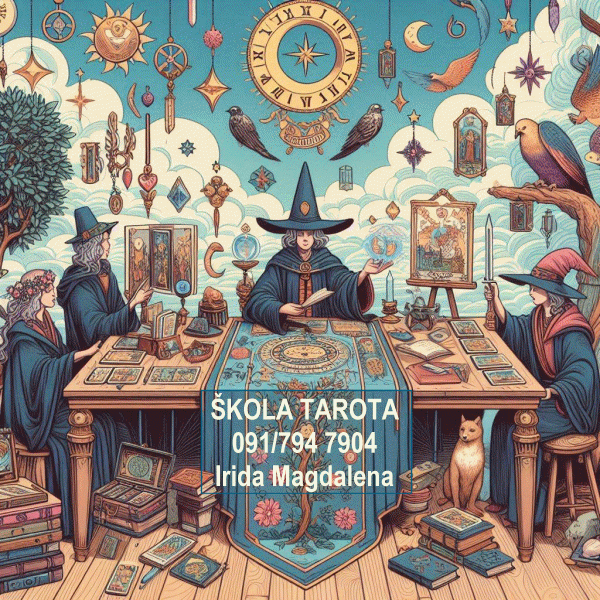



































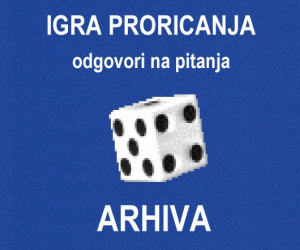















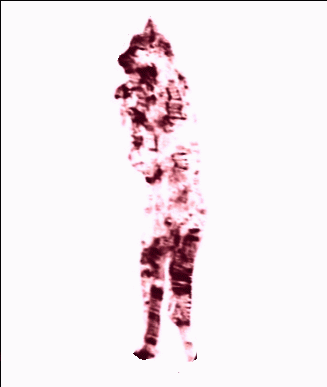 edin.kecanovic
edin.kecanovic irida
irida bglavac
bglavac










